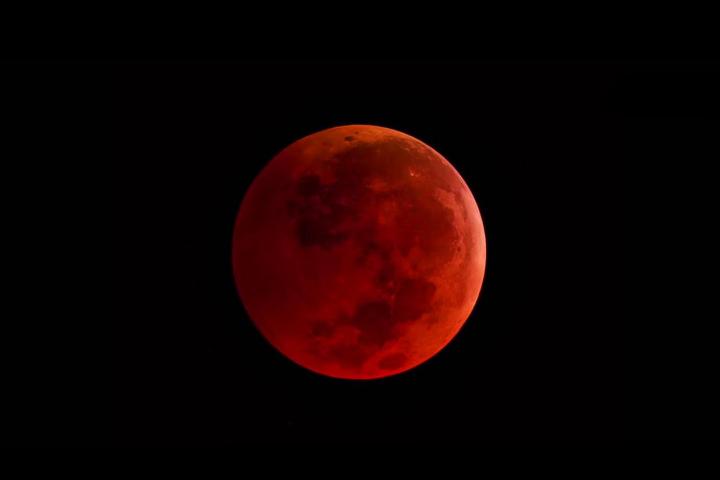
The rare phenomenon, which last occurred in 1982 and will next occur in 2033, is the result of a trifecta of events: First, the moon is at its fullest stage and will be at its nearest location to the Earth, which makes it a supermoon. Normally, this in and of itself is cause for ooh-ing and aah-ing, as the heavenly body will appear 14 percent larger and 33 percent brighter than more plebeian full moons.
Second, we’ll be witnessing a lunar eclipse, in which Earth will line up directly between the sun and the moon, causing the moon to “completely fall in the shadow of the Earth,” says Dr. David Wolf, a former NASA astronaut and “extraordinary scientist in residence” for The Children’s Museum. And finally, because a good portion of light is refracted off Earth’s atmosphere, the moon will take on a bloody red hue, making the event all the more mysterious-seeming and eye-catching.
From 9:07 pm Sunday evening to 12:27 am Monday morning (Eastern time), the eclipse will be in full swing, with the zenith of the whole event expected to take place at precisely 10:11 pm EST. The partial eclipse phase, during which the moon will slowly make its way into Earth’s shadow, will span about an hour, and the full eclipse, during which the moon will appear the most stunning in its red glory, will go on for a full 72 minutes, so from 10:11 until 11:23 pm. For the remainder of the time, the moon will slowly move out of Earth’s shadow, and viewers will be able to see the moon slowly shed its red robes and return to its normal, iridescent glow.
Happily, this extraterrestrial phenomenon may be enjoyed by around 3 billion of Earth’s denizens, with about 1 billion people in the Western Hemisphere, 1.5 billion people across Europe and Africa, and around half a billion in western Asia capable of viewing the spectacular event. If you’re worried about cloud cover, check out the below map for updates on how the weather may affect your neck of the woods.
In typical American fashion, the event has spawned quite a few parties, so you can enjoy the eclipse with your peers. Beginning at 9:30 pm Eastern, Griffith Observatory in Los Angeles will stream a webcast of the eclipse, and in Virginia, the Shenandoah National Park will be throwing a fabulous “star party” where you can not only watch the moon in all its glory, but also learn a bit more about astronomy.
If you don’t want to leave the comfort of your home, visit Slooh.com, where millions from around the world will be able to watch the live stream of the historic happening. NASA’s Marshall Space Flight Center will also broadcast the eclipse on its website.
So now you have no excuses. Watch a bit of history being made, and grab your favorite fall treat. The turn of the season is officially upon us.
Editors' Recommendations
- Outside the solar eclipse zone? Here’s how to watch it online
- A total solar eclipse will pass over parts of Chile and Argentina on Monday
- A year on this Jupiter-like planet lasts 18 hours and it’s about to be destroyed
- Prepare for liftoff! Here are all the moon missions happening in the next decade
- Here’s how you can watch Tuesday’s total solar eclipse over South America


